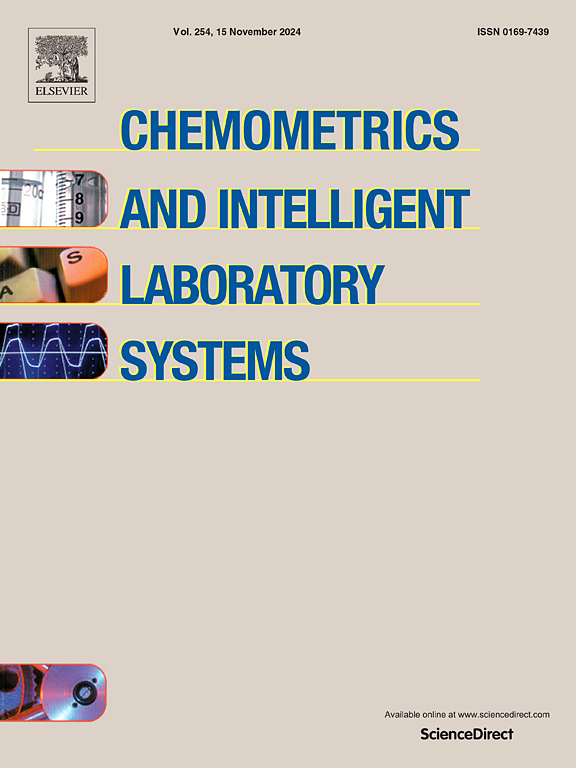设计聚(乳酸-羟基乙酸)纳米颗粒在给药中的应用,通过人工智能方法寻找纳米颗粒合成的条件
IF 3.7
2区 化学
Q2 AUTOMATION & CONTROL SYSTEMS
Chemometrics and Intelligent Laboratory Systems
Pub Date : 2025-01-27
DOI:10.1016/j.chemolab.2025.105335
引用次数: 0
摘要
聚乳酸-羟基乙酸(PLGA)由于其可生物降解的特性而成为最常用的药物递送聚合物之一。制备纳米级PLGA颗粒对于开发该聚合物用于纳米药物递送具有重要意义。本工作探索了合成过程中粒度(nm)预测和Zeta电位(mV)的PLGA回归任务的机器学习方法。利用分类输入(PLGA类型和反溶剂类型)和数值输入(PLGA浓度和反溶剂浓度)的综合数据集,研究采用隔离森林进行异常值检测,Min-Max归一化和One-Hot编码进行预处理。采用LASSO、多项式回归(PR)和支持向量回归(SVR)等回归模型与Bagging Ensemble方法相结合,提高了预测性能。采用GSO算法进行超参数整定。结果表明,BAG-SVR预测粒径的检验R2最高,为0.9422。对于Zeta电位预测,BAG-PR优于其他模型,检验R2得分为0.98881。本文章由计算机程序翻译,如有差异,请以英文原文为准。
Design of Poly(lactic-co-glycolic acid) nanoparticles in drug delivery by artificial intelligence methods to find the conditions of nanoparticles synthesis
Poly (lactic-co-glycolic acid) (PLGA) is one of the most commonly used polymers for drug delivery due to its biodegradable property. Production of PLGA particles in nanosized scale would be of great importance to exploit the properties of this polymer for nano-based drug delivery. This work explores machine learning methods for the PLGA regression tasks of particle size (nm) prediction and Zeta potential (mV) in the synthesis process. Utilizing a comprehensive dataset with categorical inputs (PLGA type and anti-solvent type) and numerical inputs (PLGA concentration and anti-solvent concentration), the research incorporates Isolation Forest for outlier detection, Min-Max Normalization, and One-Hot Encoding for preprocessing. Several regression models including LASSO, Polynomial Regression (PR), and Support Vector Regression (SVR) were employed in combination with Bagging Ensemble methods for enhanced predictive performance. Glowworm Swarm Optimization (GSO) was applied for hyperparameter tuning. The results indicate that BAG-SVR attained the highest test R2 of 0.9422 for particle size prediction. For Zeta potential prediction, BAG-PR outperformed other models, achieving a test R2 score of 0.98881.
求助全文
通过发布文献求助,成功后即可免费获取论文全文。
去求助
来源期刊
CiteScore
7.50
自引率
7.70%
发文量
169
审稿时长
3.4 months
期刊介绍:
Chemometrics and Intelligent Laboratory Systems publishes original research papers, short communications, reviews, tutorials and Original Software Publications reporting on development of novel statistical, mathematical, or computer techniques in Chemistry and related disciplines.
Chemometrics is the chemical discipline that uses mathematical and statistical methods to design or select optimal procedures and experiments, and to provide maximum chemical information by analysing chemical data.
The journal deals with the following topics:
1) Development of new statistical, mathematical and chemometrical methods for Chemistry and related fields (Environmental Chemistry, Biochemistry, Toxicology, System Biology, -Omics, etc.)
2) Novel applications of chemometrics to all branches of Chemistry and related fields (typical domains of interest are: process data analysis, experimental design, data mining, signal processing, supervised modelling, decision making, robust statistics, mixture analysis, multivariate calibration etc.) Routine applications of established chemometrical techniques will not be considered.
3) Development of new software that provides novel tools or truly advances the use of chemometrical methods.
4) Well characterized data sets to test performance for the new methods and software.
The journal complies with International Committee of Medical Journal Editors'' Uniform requirements for manuscripts.

 求助内容:
求助内容: 应助结果提醒方式:
应助结果提醒方式:


